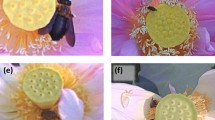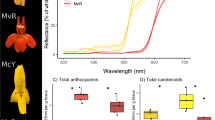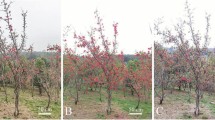Abstract
The Canary Islands are home to a guild of endemic, threatened bird pollinated plants. Previous work has suggested that these plants evolved floral traits as adaptations to pollination by flower specialist sunbirds, but subsequently they appear to be have co-opted passerine birds as sub-optimal pollinators. To test this idea we carried out a quantitative study of the pollination biology of three of the bird pollinated plants, Canarina canariensis (Campanulaceae), Isoplexis canariensis (Veronicaceae) and Lotus berthelotii (Fabaceae), on the island of Tenerife. Using colour vision models, we predicted the detectability of flowers to bird and bee pollinators. We measured pollinator visitation rates, nectar standing crops, as well as seed set and pollen removal and deposition. These data showed that the plants are effectively pollinated by non-flower specialist passerine birds that only occasionally visit flowers. The large nectar standing crops and extended flower longevities (>10days) of Canarina and Isoplexis suggests that they have evolved bird pollination system that effectively exploits these low frequency non-specialist pollen vectors and is in no way suboptimal. Seed set in two of the three species was high, and was significantly reduced or zero in flowers where pollinator access was restricted. In L. berthelotii, however, no fruit set was observed, probably because the plants were self incompatible horticultural clones of a single genet. We also show that, while all three species are easily detectable for birds, the orange Canarina and the red Lotus (but less so the yellow-orange Isoplexis) should be difficult to detect for insect pollinators without specialised red receptors, such as bumblebees. Contrary to expectations if we accept that the flowers are primarily adapted to sunbird pollination, the chiffchaff (Phylloscopus canariensis) was an effective pollinator of these species.
Similar content being viewed by others
Article PDF
Author information
Authors and Affiliations
Corresponding author
Rights and permissions
About this article
Cite this article
Ollerton, J., Cranmer, L., Stelzer, R. et al. Bird pollination of Canary Island endemic plants. Nat Prec (2008). https://doi.org/10.1038/npre.2008.1977.1
Received:
Accepted:
Published:
DOI: https://doi.org/10.1038/npre.2008.1977.1



